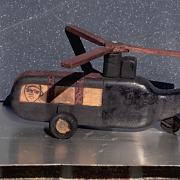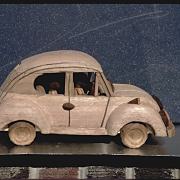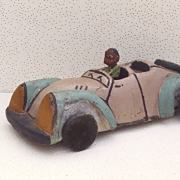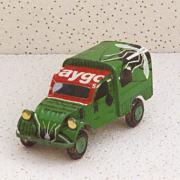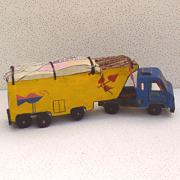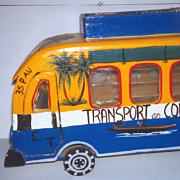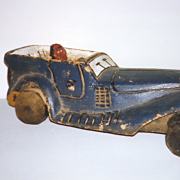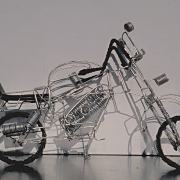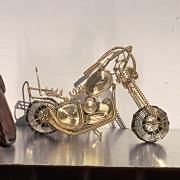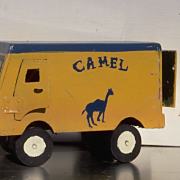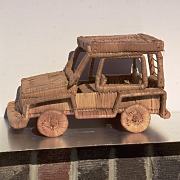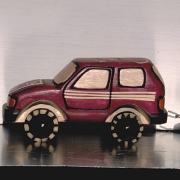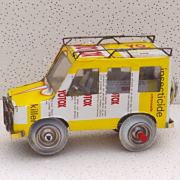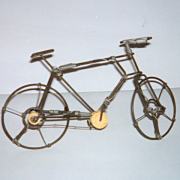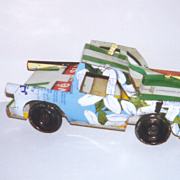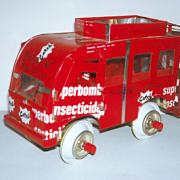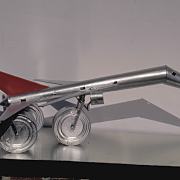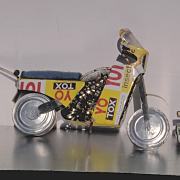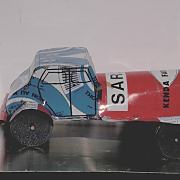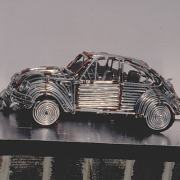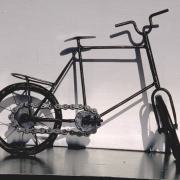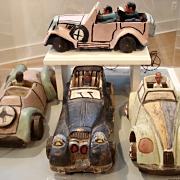Creative Recycling From Africa

This collection has been acquired by the Mbari Institute for Contemporary African Art in Washington, DC, and is available for exhibition. Curator Mimi Wolford.
Most likely when you think about recycling you do not envision art, especially African art - until now. One person's trash becomes another's treasure - handmade, colorful and clever works of art and whimsy. This online exhibit is from the collection of Jude Andreasen and Cleve Overton, who have just published a new book, Creative Recycling: Handmade in Africa. The book has 80 full-color pages of model cars, trucks, motorcycles, planes and boats, all made from bits of tin, wire, cloth, wood, plastic and rubber. It is a testament to the imagination and ingenuity of African children and craftsmen, and a delightful addition to the body of publications on global folk art. The collection was exhibited at the Museum of York County, South Carolina, in 2001 - 2002 as "Re-cover, Re-Imagine, Re-Adapt: Creative Recycling from Africa."
The pieces in the collection are from 22 African countries, including Senegal, Mali, Madagascar, Kenya, South Africa and the Democratic Republic of the Congo. Representing a folk art form appropriately dubbed "recyclia," these "found objects" have been "recycled" into a new, unexpected and surprising life as miniature vehicles. Who would have expected a used motor oil can to become a Land Rover, or a discarded tuna can to become a boat?
Where does this creative recycling process begin? Without the distractions of television or the plethora of manufactured toys that surround youngsters in the West, African children must create playthings for themselves. Everywhere in Africa, children use whatever materials are available to amuse themselves. A youthful fascination with locomotion and vehicles is common in all corners of the African continent. A miniature vehicle, even a simple wheel, can entertain for hours at a time. If asked what the object is, a child will answer "car" or "truck." There seems to be no word for "toy" in many African languages.
It's at an early age that children in Africa learn responsibility. They help adults to gather firewood, draw water, grow food, herd livestock and tend babies. Even when they begin to invent their own toys, making a car from an empty can and a piece of rope, they must often interrupt their amusement to help the family. By age 12 and 13, many of these children are quite accomplished and tin-snips and pliers are prized tools. Building their toys, children picture the places they will go and the things they will do - all the while learning to be artists, engineers and inventors.
When they grow into young adults, these Africans realize they may supplement the family income by selling their works to foreigners. They refine their techniques and make them more sophisticated and appealing. They begin to use solder and glue, and find better materials to recycle.
Thus, our initial inclination to call this collection "toys" would hardly do justice to the art. Many of these pieces were not made for or by children - although the artisans usually began their craft while very young. Their joy in crafting has been joined in a serious purpose, and the results are wonderful works of art and craft. This is recycling as you've never seen it!

